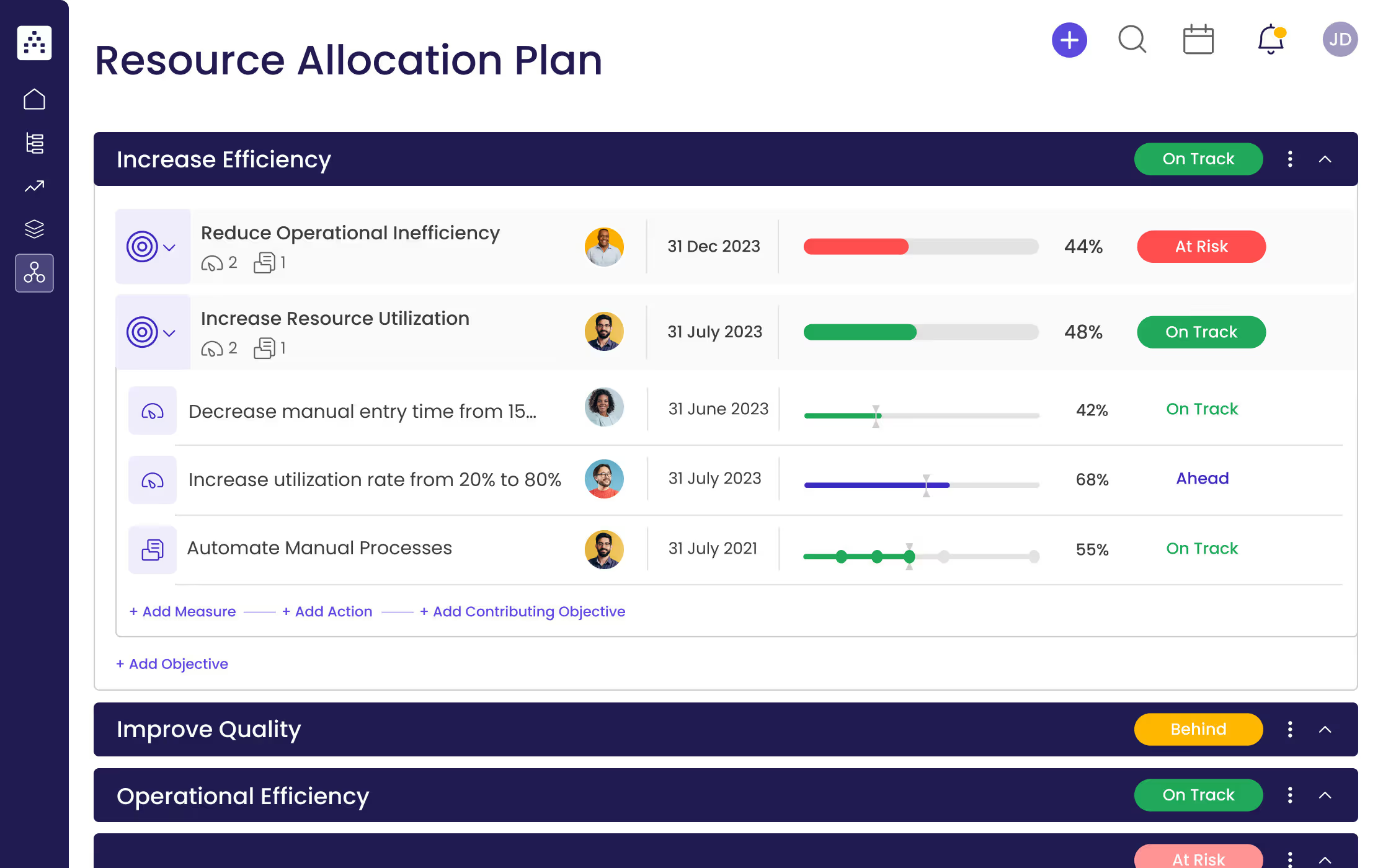What is a Resource Allocation Plan?
A resource allocation plan outlines a clearly defined set of objectives and how resources should be allocated to achieve those objectives. It is used to identify, plan and optimize the resources of an organization (such as personnel, technology, and finances) in order to create a more efficient and productive organization. This plan template is designed to help teams of any size and industry to create an actionable plan to identify and allocate resources.
What's included in this Resource Allocation Plan template?
- 3 focus areas
- 6 objectives
- 6 projects
- 6 KPIs
Each focus area has its own objectives, projects, and KPIs to ensure that the strategy is comprehensive and effective.
Who is the Resource Allocation Plan template for?
The resource allocation plan template is designed to be used by any team or organization that wants to increase efficiency, optimize resources, and improve the overall quality of their products and services. This template can be used by both large and small teams, and can be adapted to fit the specific needs of any industry.
1. Define clear examples of your focus areas
Developing a resource allocation plan starts with identifying the focus areas that the team or organization wants to address. Focus areas are broad categories of goals that the team wants to achieve. These can be anything from increasing efficiency to improving quality, or increasing revenue. Once the focus areas have been identified, objectives, key performance indicators (KPIs), and projects can be identified that will help the team or organization achieve their goals.
2. Think about the objectives that could fall under that focus area
Objectives are specific goals that the team or organization can set in order to achieve their focus areas. These are smaller, more achievable goals that can be used to move closer to the larger focus areas. For example, if the focus area is increasing efficiency, the objectives could include reducing operational inefficiency and increasing resource utilization.
3. Set measurable targets (KPIs) to tackle the objective
Once objectives have been set, it is important to set measurable targets (KPIs). KPIs are metrics that can be used to measure the progress of the objectives. These can be anything from time-based measurements (such as reducing manual entry time from 15 minutes to 5 minutes) to percentage-based measurements (such as increasing utilization rate from 20% to 80%). Setting measurable targets helps ensure that the team or organization are able to track their progress.
4. Implement related projects to achieve the KPIs
Projects (or actions) are the steps that the team or organization must take in order to achieve their KPIs. These can be anything from automating manual processes to increasing quality inspection. It is important to identify the steps that must be taken in order to achieve the KPIs and ensure that the team or organization is able to track their progress.
5. Utilize Cascade Strategy Execution Platform to see faster results from your strategy
The Cascade Strategy Execution Platform is a comprehensive tool that allows teams and organizations to create and track their resource allocation plans. With Cascade, teams can easily identify and track their focus areas, objectives, KPIs, and projects in order to create an actionable plan to achieve their goals. Utilizing the Cascade platform can help teams and organizations see faster results from their strategies.


